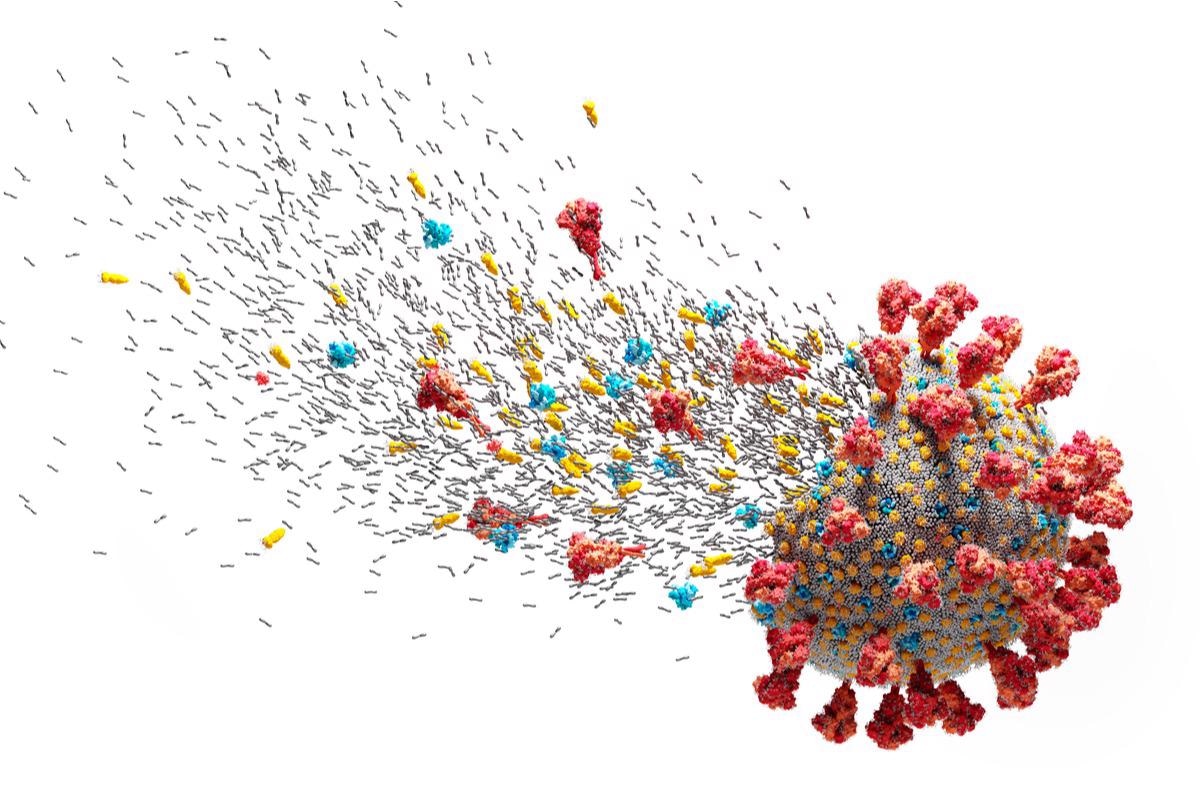Small interfering ribonucleic acid (siRNA)-based therapies have shown promise in fighting viral infections by targeting a specific region of the viral genome and downregulating viral replication efficiently. Despite these advantages, siRNA requires a suitable delivery system to elicit a desired therapeutic impact. Due to this limitation of siRNA, the virus-inspired polymer for endosomal release (VIPER) block copolymer has been studied as an effective delivery agent for siRNA.

Study: Inhibition of SARS-CoV-2 replication in the lung with siRNA/ VIPER polyplexes. Image Credit: PHOTOCREO Michal Bednarek / Shutterstock.com
Background
Previous studies have shown that SARS-CoV-2 is transmitted through respiratory secretions and replicates primarily in respiratory epithelial cells. Although several vaccines against the coronavirus disease 2019 (COVID-19) have been approved for use and prevented innumerable deaths, new therapeutics remain urgently needed.
Antiviral drugs like remdesivir have been repurposed to treat COVID-19; however, they cannot be considered satisfactory for the treatment of this disease. The development of novel antiviral drugs is especially challenging for coronaviruses, as they use cellular components to replicate. As a result, siRNAs have been considered to be promising candidates for treating COVID-19, as they can downregulate any given target messenger RNA (mRNA).
About the study
Previously, lipids, polymers, or peptides have been used to develop nanocarriers for siRNA, as this approach is preferable considering the pulmonary administration route. Lipid-based systems could have stability problems, while polymer-based formulations lend themselves to being nebulized and processed into a dry powder for inhalation.
Thus, the researchers of the current study formulated siRNA with VIPER, which is efficient for both plasmid DNA (pDNA) and siRNA delivery. Previous research has shown the suitability of VIPER polymers for the delivery of siRNA to the lungs, which led the authors of the present study to further explore this concept and develop a formulation that can be efficiently delivered to lung epithelial cells.
To this end, the researchers constructed an air-liquid interface (ALI) culture of lung epithelial cells to better understand the behavior of the polyplexes in a more sophisticated three-dimensional (3D) culture model. The researchers tested the activity of the VIPER polyplexes against wild-type SARS-CoV-2 in human precision-cut lung slices (PCLS) and also investigated the in vivo distribution and delivery of these agents to various cell types in the lung.
Study findings
Both siRNA/PEI and siRNA/VIPER polyplexes were evaluated by the dynamic light scattering method to determine the size and polydispersity index. To this end, both PEI and VIPER polyplexes exhibited favorable hydrodynamic diameters for pulmonary delivery of 85.52 nanometers (nm) and 55.78 nm, respectively.
As nanoparticles formed with VIPER polymer were smaller in size, they could help evade macrophages and increase diffusion through the mucus mesh. Lased doppler anemometry was used to test zeta potential, which showed that both PEI and VIPER polyplexes formulations exhibited a positive zeta potential of about 10 mV, which indicated the cationic nature of polymers.
The lung epithelium is covered by a mucus layer that inhibits the delivery of drugs to the underlying cells layers. Researchers tested the stability of VIPER and PEI polyplexes in the presence of increasing concentrations of mucin and a commercially available lung surfactant Alveofact® through a modified SYBR gold assay.
VIPER displayed a negligible release of siRNA at 0.5 mg/ml of mucin; however, PEI polyplexes were able to release about 60% of their load. Although both the formulations revealed stability in lung surfactant compared to mucin, VIPER exhibited better results than PEI, with a release of 10% of the siRNA load.
The researchers also investigated the gene silencing activity of PEI and VIPER polyplexes and both formulations could facilitate a gene knockdown at the mRNA level. However, VIPER exhibited better activity than PEI, as it reached about 80% gene silencing.
Both PEI and VIPER presented a good overall safety profile, with no reduction in cell viability. Additionally, there was no significant difference in cell viability between the two polymers.
Conclusions
In the current study, the researchers present a formulation for pulmonary delivery of siRNA and demonstrate the ability of the block copolymer VIPER to form polyplexes. The polyplexes were found to reach lung epithelial cells both in vitro and in vivo, as well as penetrate the respiratory mucus layer in an air-liquid interface 3D culture model.
The polyplexes exhibited good tolerability while also demonstrating efficient antiviral activity against SARS-CoV-2. In conclusion, these findings collectively confirm the ability of siRNA-based therapies to act as antivirals and offer a novel treatment approach to counter SARS-CoV-2 infection.
Journal reference:
- Baldassi, D, Ambike, S., Feuerherd, M., et al. (2022) Inhibition of SARS-CoV-2 replication in the lung with siRNA/ VIPER polyplexes. Journal of Controlled Release 345; 661-674. doi:10.1016/j.jconrel.2022.03.051.